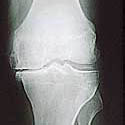A qualitative study on patients with knee osteoarthritis to evaluate the influence of different pain patterns on patients’ quality of life and to find out patients’ interpretation and coping strategies for the disease

Submitted: 16 June 2010
Accepted: 14 December 2010
Published: 25 January 2011
Accepted: 14 December 2010
Abstract Views: 6249
PDF: 1276
HTML: 7645
Appendix: 0
HTML: 7645
Appendix: 0
Publisher's note
All claims expressed in this article are solely those of the authors and do not necessarily represent those of their affiliated organizations, or those of the publisher, the editors and the reviewers. Any product that may be evaluated in this article or claim that may be made by its manufacturer is not guaranteed or endorsed by the publisher.
All claims expressed in this article are solely those of the authors and do not necessarily represent those of their affiliated organizations, or those of the publisher, the editors and the reviewers. Any product that may be evaluated in this article or claim that may be made by its manufacturer is not guaranteed or endorsed by the publisher.
Supporting Agencies
Hong Kong Institution of Musculoskeletal MedicineChan, K. K., & Chan, L. W. (2011). A qualitative study on patients with knee osteoarthritis to evaluate the influence of different pain patterns on patients’ quality of life and to find out patients’ interpretation and coping strategies for the disease. Rheumatology Reports, 3(1), e3. https://doi.org/10.4081/rr.2011.e3
PAGEPress has chosen to apply the Creative Commons Attribution NonCommercial 4.0 International License (CC BY-NC 4.0) to all manuscripts to be published.


 https://doi.org/10.4081/rr.2011.e3
https://doi.org/10.4081/rr.2011.e3



